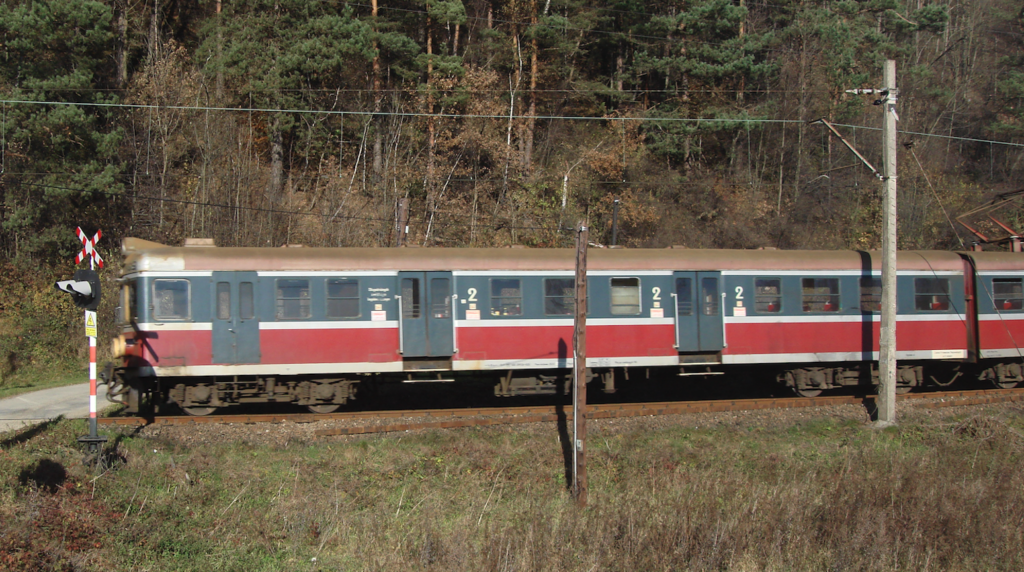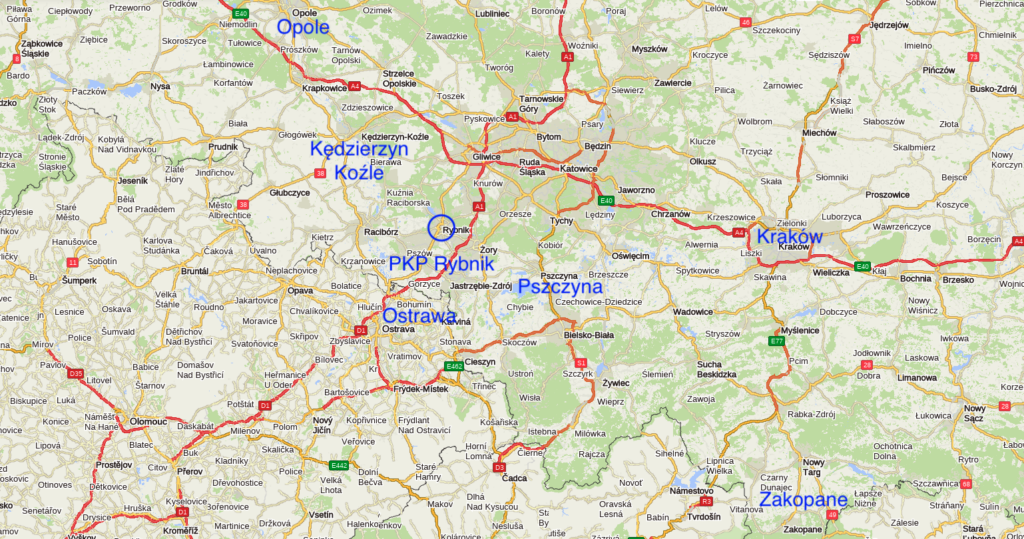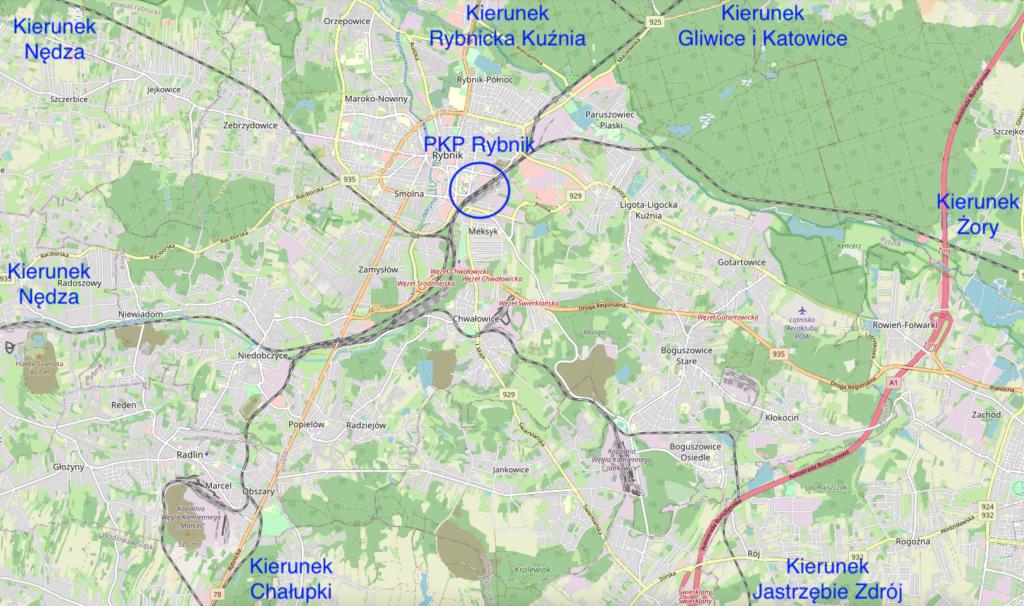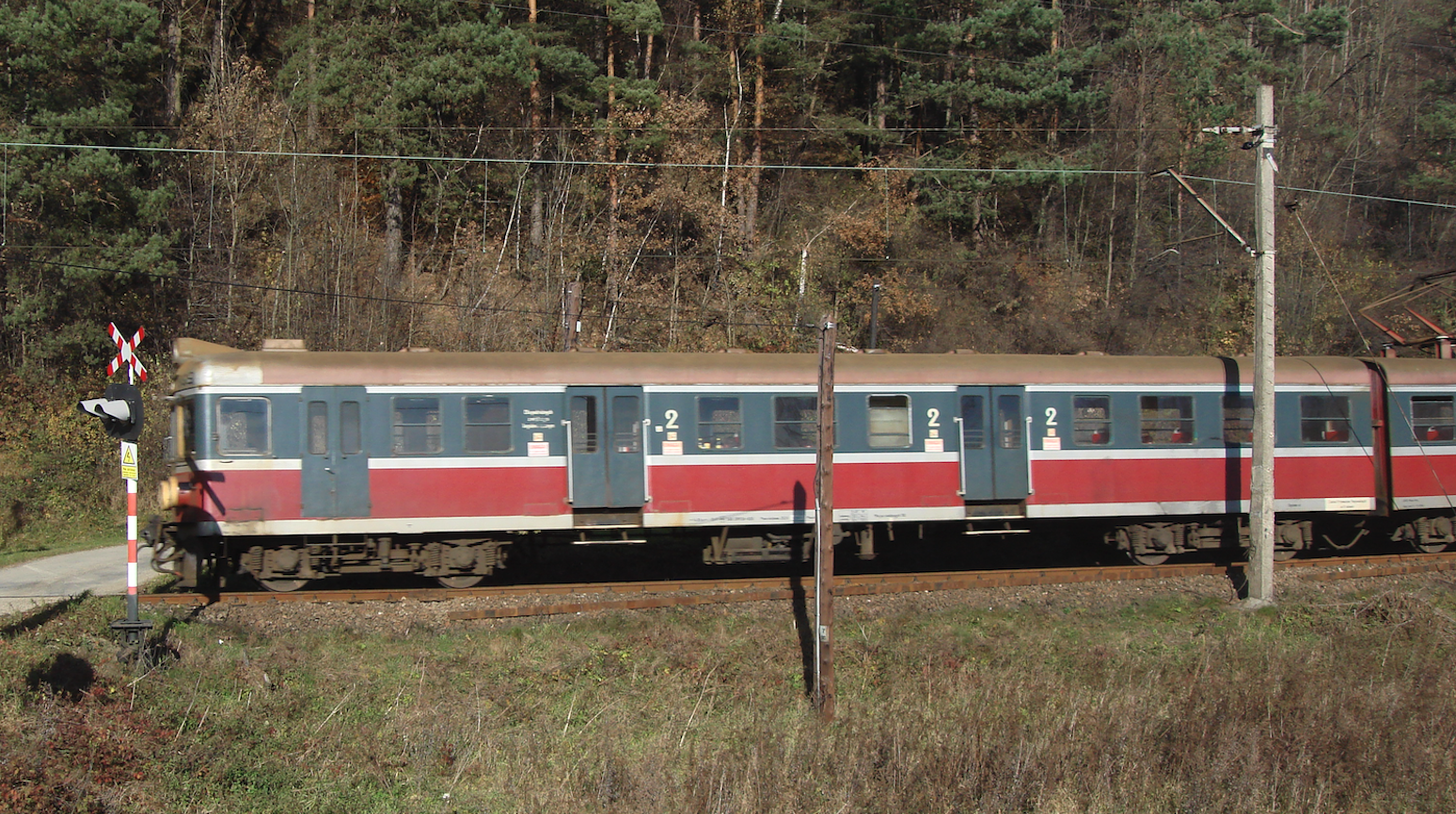Rybnik 2023-02-15
Rybnik Railway Station.
Geographic coordinates: 50.089N 18.548E. Elevation: 245 m. Address: Dworcowa 2 Street, 44-200 Rybnik.
Rybnik is a city in Poland, located in the Silesian Voivodeship. Historically, it is located in Upper Silesia. The development of the mining industry has resulted in a population of 132,923 (2021).




Railway Line No. 140.
On August 9, 1853, construction began on the railway line from Katowice to Ligota via Rybnik to Nędza. Currently, the line is No. 140. On October 1, 1856, the Orzesze–Rydułtowy section (then Czernica railway station) was opened. Rybnik then became an important station, providing access to Racibórz and further on to Chałupki and Bohumin. However, it should be remembered that initially the route was only provisional, with steep inclines, and the wagon train was pulled by two locomotives. Travel times were long. The situation improved when the 727-meter-long Rydułtowy railway tunnel was opened in January 1857. However, in May 1857, the tunnel partially collapsed, and reconstruction was completed on December 20, 1858. On December 29, 1856, another railway section, Orzesze – Mikołów, was opened. On December 20, 1858, the Mikołów – Katowice Ligota section was opened. On that day, railway line No. 140 was completed.
Line No. 140, Katowice Ligota – Nędza, runs latitudinally and lies almost entirely within the Silesian Voivodeship. It is 67.203 meters long, electrified, and has a maximum train speed of 120 km/h. The line indirectly connects with Racibórz and Kędzierzyn-Koźle via line No. 151. The Leszczyny – Rybnik Towarowy and Sumina – Nędza sections of the line are double-track. Modernization work has been underway on the route since 2017.
Railway Line No. 158.
In October 1882, as part of the construction of Railway Line No. 158, known as the “Second Bohumín Route,” a section to Wodzisław Śląski was opened. The route leads through Niedobczyce (now Rybnik Towarowy) to Wodzisław Śląski via Obszary and Radlin. On December 22, 1882, the railway line was extended to Chałupki via Czyżowice, Bełsznica, and Olza. In 1884, a connection was established between Rybnik and the Ostrów Basin (then part of Austria).
Railway Line No. 158 is 25.327 km long, electrified, and runs southwest from Rybnik. The line runs through the city of Rybnik, Wodzisław Śląski County, including two towns: Radlin and Wodzisław Śląski, and Racibórz County. The Rybnik Towarowy – Wodzisław Śląski section of the line is double-track. Maximum train speed is 80 km/h.
Construction of additional railway lines.
On September 1, 1884, Rybnik gained a railway connection with Żory with the opening of the Orzesze – Żory section. This was a circular line. A direct Rybnik – Żory connection was built only in 1936.
At the turn of the 19th and 20th centuries, numerous railway sidings were built to connect mines and factories. In 1907, Niedobczyce station (now Rybnik Towarowy) was connected to the Chwałowice mine. The siding was 4 km long. In 1915, the siding was extended to the Jankowice mine, by another 4 km.
On July 16, 1912, the double-track Rybnik – Leszczyny section, 8 km long, was opened. On March 15, 1913, the double-track Rybnik – Sumina section, 12.5 km long, was opened to traffic.
In 1933, the decision was made to build a new, latitudinal railway line, Rybnik – Żory – Suszec – Pszczyna. The shorter route and faster travel were expected to bring tangible benefits. Currently, this line carries line number 148. The line was opened to traffic in stages. On November 21, 1936, the Rybnik – Żory section was opened, and on November 29, 1938, the Żory – Pszczyna section.
Electrification.
Electrification of the railway junction in Rybnik began in 1969. The first electrified route was the Kędzierzyn Koźle – Rybnik line. The first electric locomotive with a train of wagons ran on December 1, 1970. In 1973, the Rybnik – Żory section was electrified. In 1977, the Rybnik – Katowice section was electrified. All lines used for passenger traffic were electrified, and the last electrified section, Rybnik Towarowy – Sumina, was opened on May 22, 1989.
Rybnik Railway Station.
Currently, Rybnik is served by five railway lines used for passenger or freight traffic: Railway Line No. 140 Katowice Ligota – Nędza. Railway Line No. 158 Rybnik Towarowy – Chałupki. Railway Line No. 173 Rybnik – Sumina. Railway Line No. 148 Pszczyna – Rybnik. Railway Line No. 688 Rybnik Towarowy RTA – Rybnik RBC.
There are eight active railway stations and stops in Rybnik: Rybnik (Śródmieście), Rybnik Niedobczyce, Rybnik Niewiadom, Rybnik Paruszowiec, Rybnik Towarowy, Rybnik Rymer, Rybnik Piaski, and Rybnik Gotartowice.
During the day, 73 passenger trains depart from Rybnik station (data as of February 2023). From Rybnik railway station you can travel to: Bielsko Biała – 1 InterCity “Szyndzielnia” train. Bohumín – 6 InterCity trains “Chopin”, “Porta Morawica”, “Silesia” (morning and evening), “Cracovia”, “Sobieski”. Bydgoszcz – InterCity “Halny”. Chałupki – 9 Silesian Railways trains. Gdynia – InterCity “Sobieski”. Katowice – 11 Silesian Railways trains. Oświęcim – 9 Silesian Railways trains. Przemyśl – 2 InterCity trains. Pszczyna – 4 Silesian Railways trains. Racibórz – 16 Silesian Railways trains. Ustka – InterCity “Szyndzielnia”. Warsaw – 3 InterCity trains. Wodzisław Śląski – 7 Wodzisław Śląski trains. Zakopane – InterCity “Halny”
Rybnik railway station is located southeast of the city center. The station has three platforms. Platform 1 is a single-track platform located next to the station building. Platform 1 is 290 meters long. Platform 2 is a covered, island platform with a roof, and is 327 meters long. Platform 3 is a covered, island platform with a roof, and is 215 meters long and relatively narrow. Passengers access the platforms via a tunnel beneath the platforms. The tunnel connects the station with Kolejowa Street on the southeast side of the station. The railway station is located at the intersection of Piłsudskiego, Kościuszki, and Dworcowa streets. The station houses a fan-shaped locomotive shed, which is still in use today. The shed is located in the northeast end of the station.
Written by Karol Placha Hetman
